Niche occupation of alien Common Wall Lizards Podarcis muralis maculiventris (West) within a habitat of Sand Lizards Lacerta a. agilis near Nuertingen, Baden-Wuerttemberg, Germany
By GUNTRAM DEICHSEL and GABRIEL WERNER
August 2011
To his astonishment, the junior of us (GW) discovered Common Wall Lizards at an agricultural driveway near Nürtingen (9°37’N, 9°20’E). WERNER MAYER of the Museum of Natural History in Vienna, Austria – contacted via www.herpetofauna.at – identified them from photographs as P. m. maculiventris (western or Southern Alps clade). Nuertingen is located outside the natural range of P. muralis ssp. in Germany.
DEUSCHLE et al. (1994) mention a range map by Sepp Bauer of the year 1987 in which a former occurrence of Common Wall Lizards near Nuertingen is reported. Crosschecking with Mr. Bauer at the county administration board of Ravensburg revealed that he discarded the records he used for his mappings then.
Under a permit by the district government board of northern Wuerttemberg in Stuttgart, GD swabbed the mouth mucosa of three animals. ULRICH SCHULTE of the Biogeography Department at the University of Trier determined the haplotype after analysing mtDNA. A chain of five informants eventually lead to the person who released eleven animals from Lake Garda in Italy at the location in the year 1991. Hence it is confirmed phenotypically, haplotypically and by a witness in a consistent way that the lizards are alien indeed. We can exclude alleged inadvertent transport together with plant material to a near-by nursery after inspecting the site of the nursery and after interviewing a former employee.
The location is a south-west exposed meadow at an elevation around 300 m with fruit trees, sparse bushes and garden huts. At its lower boundary, the meadow is bordered by a hedge and a steep slope along which an agricultural tarmac driveway runs.
A ca. 150 m long section of the slope forms the focus of the Wall Lizard colony estimated at more than 200 adult animals. Outside the focus slope, single Wall Lizards can be found at steep structures (trees, small retaining walls, dead wood and rock piles, huts) at distances up to 100 m from the slope.
Sand Lizards Lacerta a. agilis inhabit the area occupied by the Wall Lizards and the farther surroundings in a substantially lower density. Single Grass Snakes Natrix n. natrix and Slow Worms Anguis f. fragilis were also sighted.
For some time, questions about the effects of alien Wall Lizards sharing habitats with native Sand Lizards have been raised, see e.g. MÜNCH (2001). The Hans Schiemenz Fund of the German Society of Herpetology and Herpetoculture (DGHT) is supporting the project of a bachelor thesis by AURELIUS HEYM who is trying to find answers. After gathering data in the field in July and August 2011, Aurelius will analyse the data to identify the factors allowing for a coexistence of both species. ULRICH SCHULTE supervises this work which will be completed by end of 2011. SCHULTE et al. (2011) present the project in DGHT’s “elaphe” magazine. An article by SYLVIA GIERLICHS on Aurelius’ project was printed in Nuertingen’s daily newspaper of August 3, 2011 <link>. We support Aurelius in his field work together with Nuertingen’s officer in charge of environmental affairs and with the environmental consultancy office Dr. Deuschle in the town of Koengen. Here we present a photo documentation of the alien Common Wall Lizards sharing a habitat with native Sand Lizards and Slow Worms.
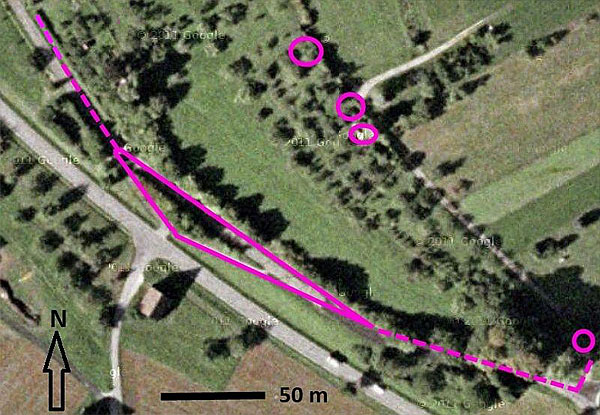 |
|
Img. 1: The area inhabited by ca. 200 Common Wall Lizards. Triangle: focus of the colony. Broken lines and circles/ellipses: single observations. Sand Lizards live within and outside this area in a low density. Source www.maps.google.de, downloaded August 18, 2011
|
Images [2] – [15] were taken in the focal area of the occurrence of Wall Lizards, [16]-[27] outside.
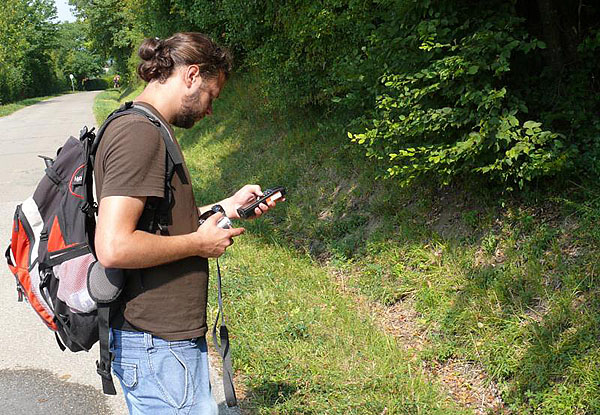 |
|
Img. 2: AURELIUS HEYM captures the observation of a Wall Lizard in the focus of the occurrence (agricultural driveway with slope and hedge) with a GPS device on August 25, 2011 (GD)
|
 |
|
Img. 3: Male Wall Lizard on March 3, 2011. The skin is still smudged with soil from hibernation- (GW)
|
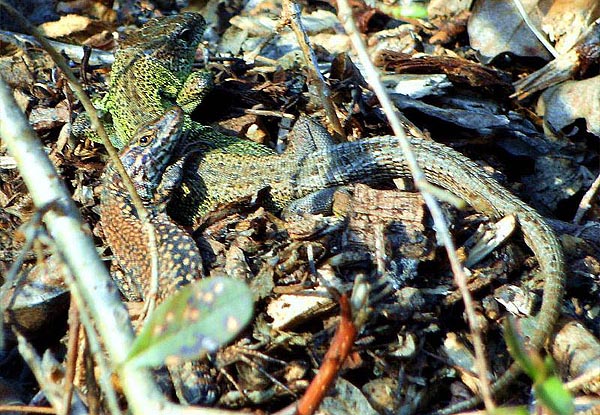 |
|
Img. 4: A male Wall and a male Sand lizard bask together on March 29, 2010. Approximately until the first skin shedding in spring territorial behaviour of males is at rest (GW)
|
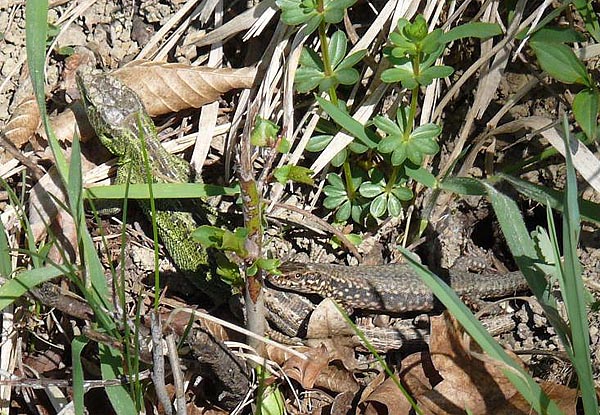 |
|
Img. 5: A male Wall and a male Sand lizard bask together on April 7, 2011. The head of the latter is still smudged with soil from hibernation. (GD)
|
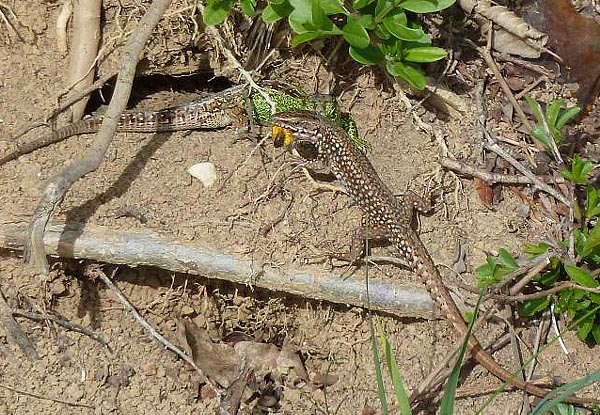 |
|
Img. 6: Male Wall Lizard with prey and Sand Lizard in front of their common hiding shelter and hibernaculum, a crack in the soil belonging to a system of burrows used by small mammals. (GW)
|
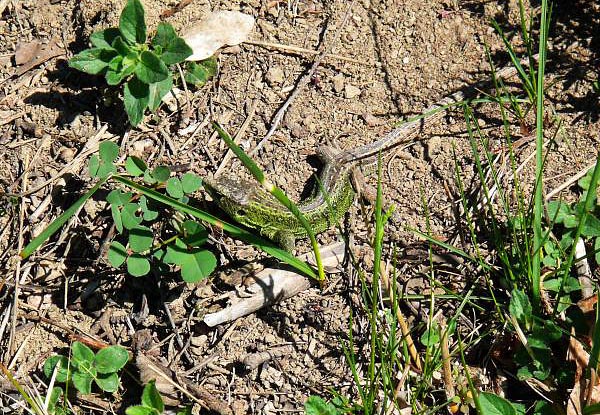 |
|
Img. 7: Male Sand Lizard in front of his hibernaculum on April 7, 2011, 12:10 hrs. (GD)
|
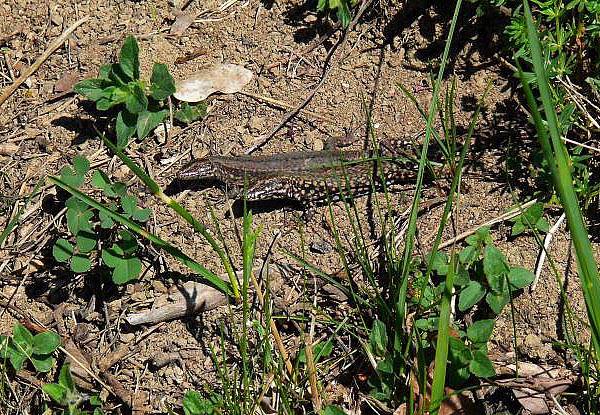 |
|
Img. 8: Pair of Wall Lizards in front of the same hibernaculum on April 7, 12:13 hrs. (GD)
|
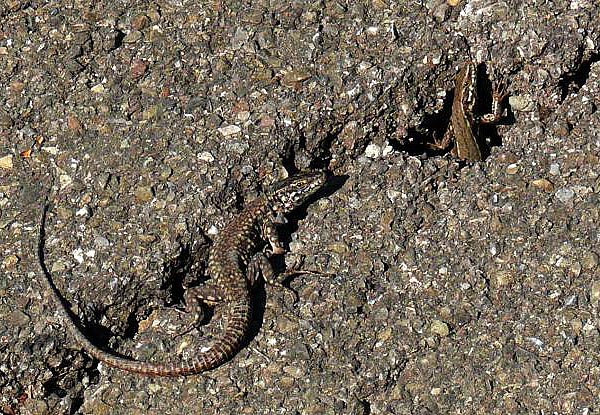 |
|
Img. 9: Cracks in the tarmac of the agricultural driveway serve as hiding shelter for this pair of Wall Lizards. April 25, 2011 (GD)
|
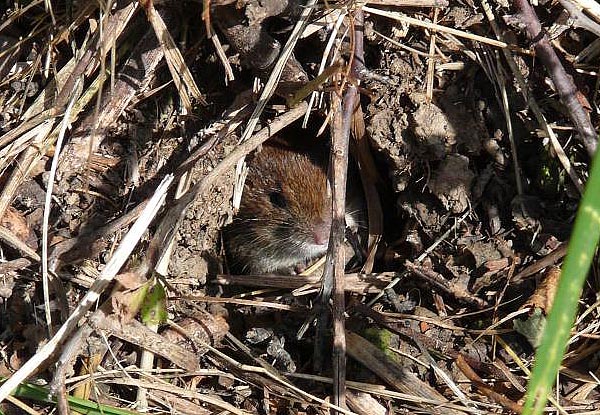 |
|
Img. 10: Common vole Microtus arvalis in the opening of its burrow on September 11, 2010 (GD)
|
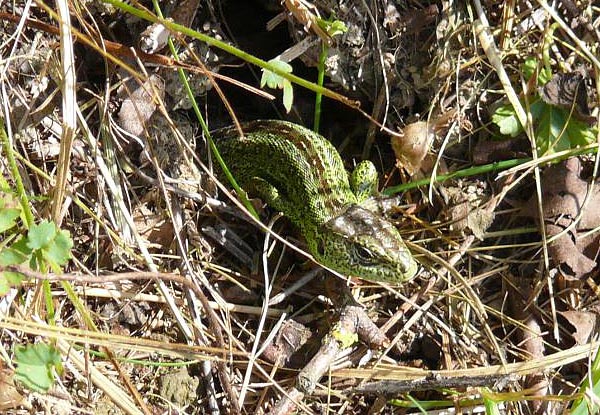 |
|
Img. 11: Male Sand Lizard in the opening of a vole’s burrow on September 11, 2010 (GD)
|
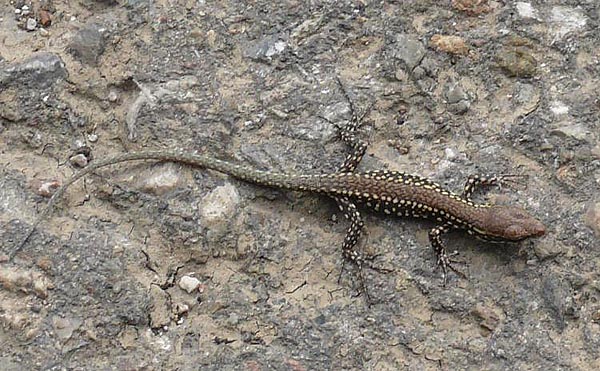 |
|
Img. 12: Wall Lizard hatchling on the driveway tarmac on August 11, 2010. The driveway serves as basking perch when the slope’s grass is too high to leave vegetation free islets as basking perches. The engineering department of the city of Nuertingen is in charge of mowing the slope several times per year. (GD)
|
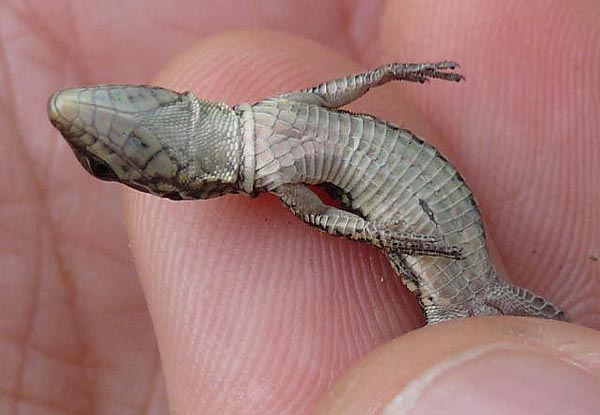 |
|
Img. 13: Wall Lizard hatchling from the driveway on June 22, 2011. The still open navel crack indicates that hatching took place less than three weeks in the past. An unusual early hatching date, enabled by the unusual warm and dry spring in southern Germany in this year. (GD)
|
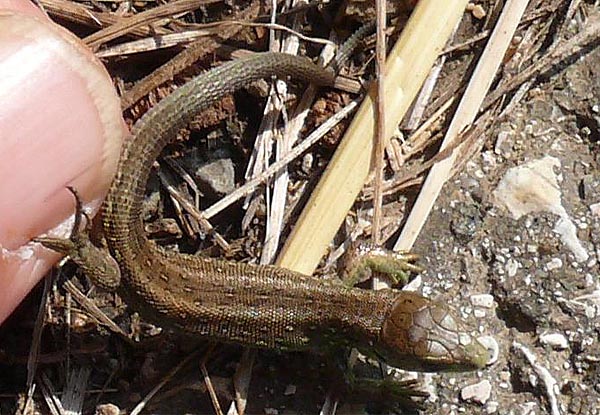 |
|
Img. 14: Sand lizard hatchling from the dry ditch alongside the driveway on August 25, 2011 (GD)
|
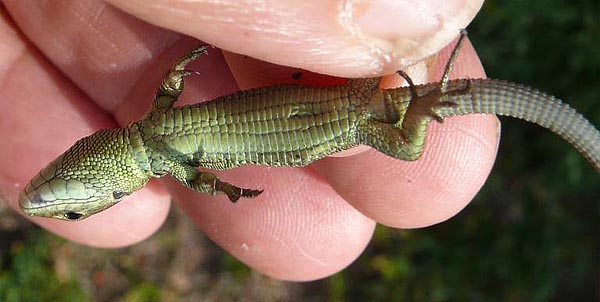 |
|
Img. 15: Venter of the animal in [14]. The navel crack is almost closed. (GD)
|
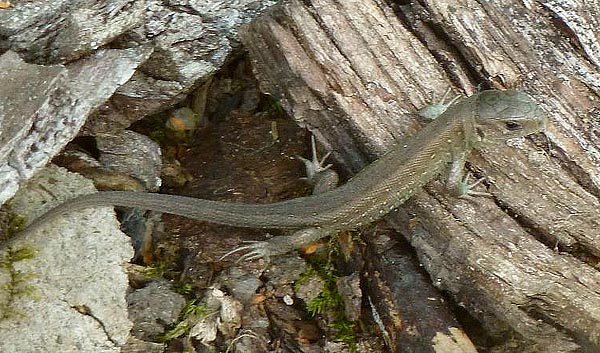 |
|
Img. 16: Sand Lizard hatchling on a piece of dead wood in a meadow with fruit trees on August 22, 2011 (GW)
|
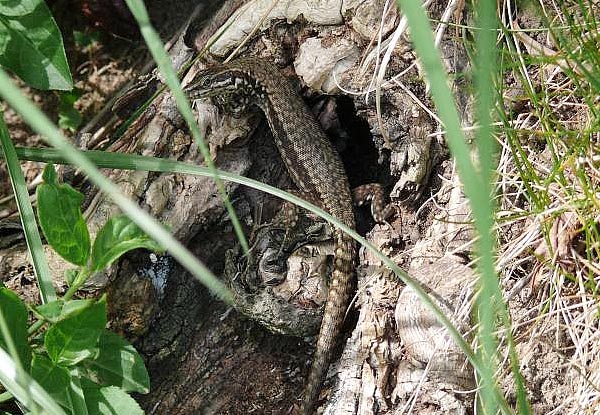 |
|
Img. 17: Female Wall Lizard on a tree stump in a hedge. April 29, 2010 (GD)
|
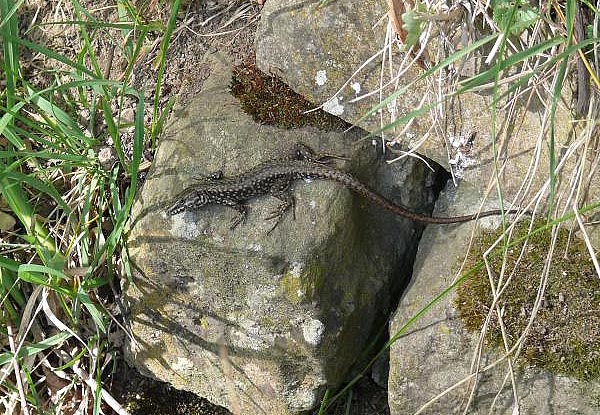 |
|
Img. 18: Male Wall Lizard at a retaining wall of a ditch on April 26, 2010 (GD)
|
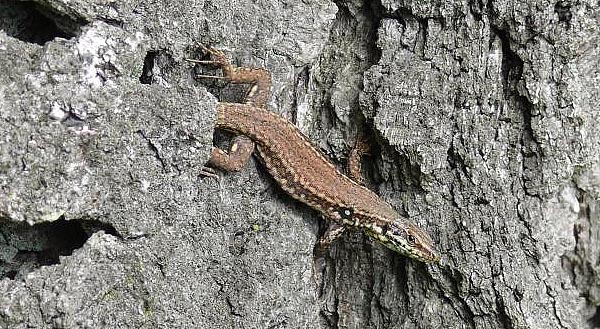 |
|
Img. 19: Female Wall Lizard at a birch stem. Hollows in the bark are used as flight shelters. August 11, 2010 (GD)
|
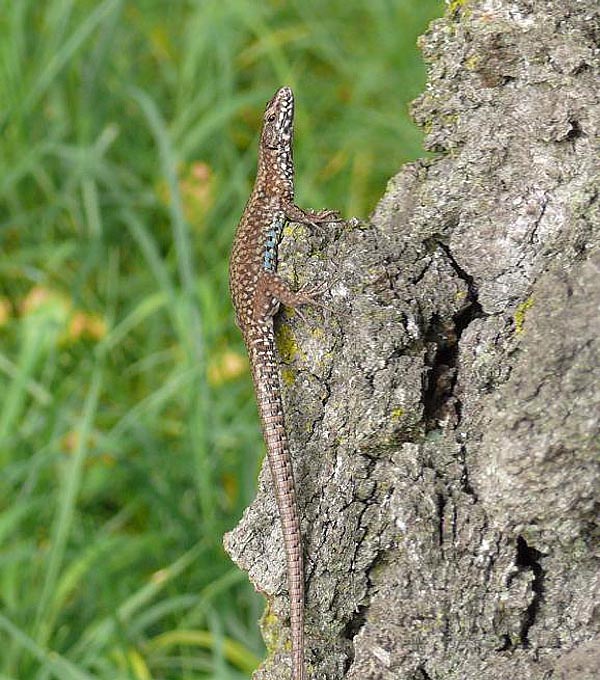 |
|
Img. 20: Male Wall Lizard at the same birch stem as in [19]. August 11, 2010 (GD)
|
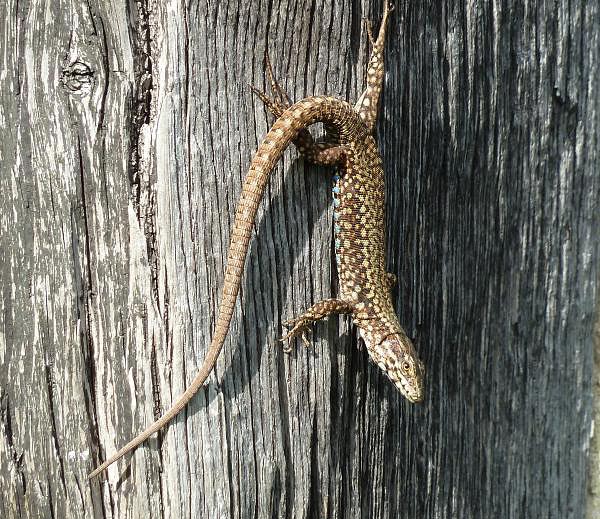 |
|
Img. 21: Male Wall Lizard at a hut. April 7, 2011 (GW)
|
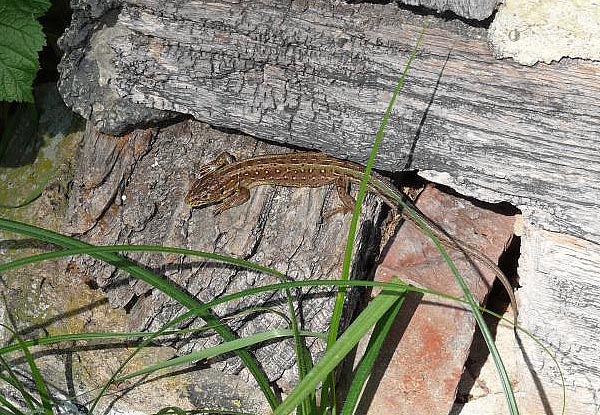 |
|
Img. 22: Female Sand Lizard at the base of a hut on September 11, 2010, 11:42 hrs. (GD)
|
 |
|
Img. 23: Male Wall Lizard at the same site as in [22], September 11, 2011, 11:59 hrs. (GD)
|
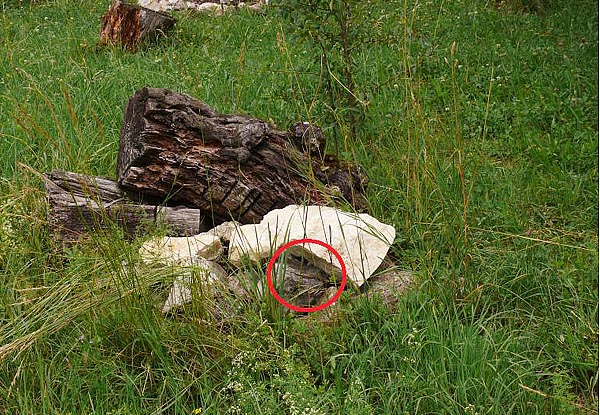 |
|
Img. 24: Dead wood / rock pile in a meadow with a male Wall Lizard. June 22, 2011 (GD)
|
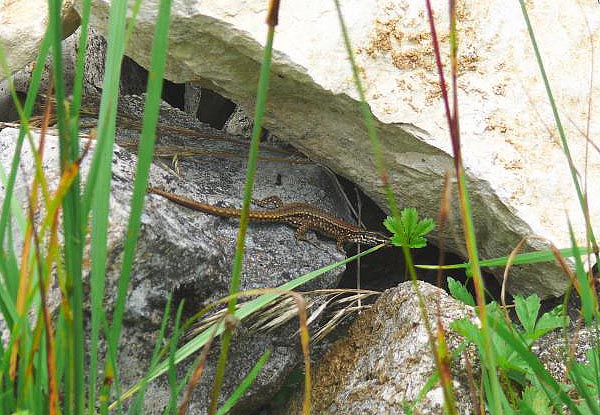 |
|
Img. 25: Detail of [24] (GD)
|
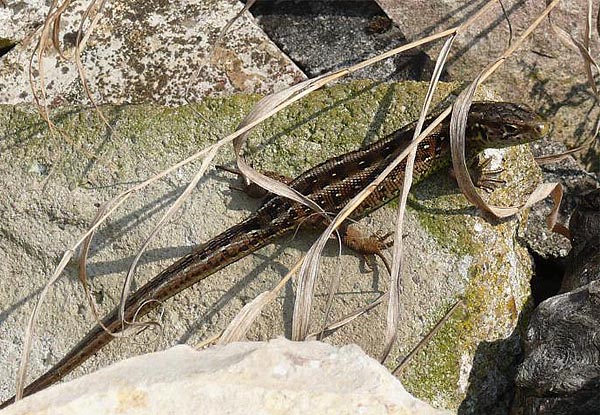 |
|
Img. 26: Female Sand Lizard on the same rock pile as in [24, 25] on August 25, 2011 (GD)
|
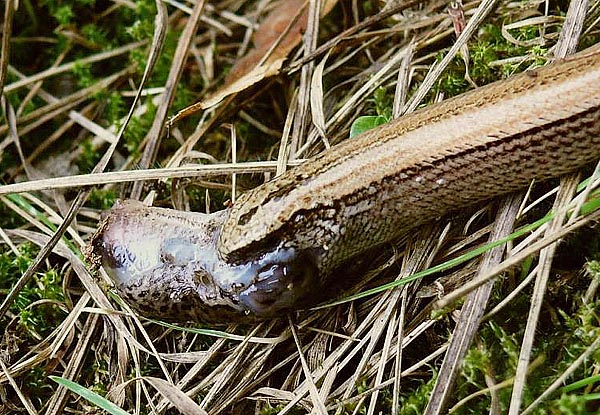 |
|
Img. 27: A female Slow Worm (Anguis f. fragilis) eats a Leopard Slug (Limax maximus) near the location of [24-26]
|
Hypothetic assessment of the syntopic occurrence of Wall Lizards and Sand Lizards until the completion of AURELIUS HEYM’s project:
The driveway and the slope – the focus of the colony – form a thermic reservoir assisting the survival of the Wall Lizards in a typical Sand Lizard habitat without larger dry walls, rock formations or similar structures. Starting from the focus, the Wall Lizards settle in steep structures in meadows (trees, small retainment walls, huts, dead wood and rock piles) at distances up to 100 metres. However, in their surroundings there seems no reproduction to be possible due to the alleged lack of required thermic needs.
Literature:
DEUSCHLE, J., REISS, J. & SCHURR, R. (1994): Reptilien. In: Naturschutzbund Deutschland Kreisverband Esslingen (Hrsg.): Natur im Landkreis Esslingen
MÜNCH, D. (2001): Gefährden allochthone Mauereidechsen autochthone Zaun- und Waldeidechsen-Populationen? - Dortmunder Beiträge zur Landeskunde (naturwissenschaftliche Mitteilungen) 35: 187-190.
SCHULTE, U., DEICHSEL G., HEYM A., HOCHKIRCH A., WERNER G., VEITH M. (2011): Vorstellung des Projekts "Etablierung eingeschleppter Mauereidechsen (Podarcis muralis) zu Lasten heimischer Zauneidechsen?", gefördert durch den Hans-Schiemenz-Fonds. Elaphe, im Druck
Acknowledgements:
We thank Ulrich Schulte, Werner Mayer and Russell Burke for reviewing the manuscript. Ira Richling identified the Slow Worm’s prey.

|



